Modern conveniences and amenities have made staying warm more of an afterthought rather than at the forefront of people’s minds during the winter months.
Having heat coming out of the vents in your house at the touch of a thermostat takes the thought process out of how to keep warm during cold days and nights.
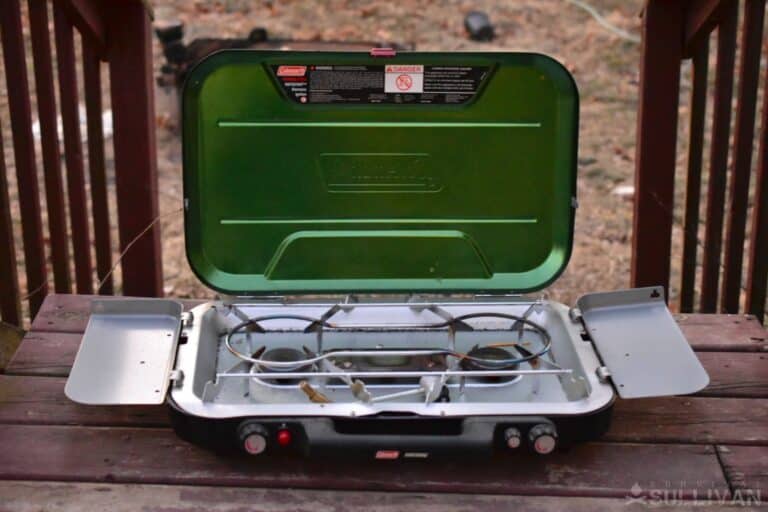
But what if those modern conveniences broke down? Power outages happen all of the time and the power grid is one breakdown away from leaving many without the ability to properly heat themselves.
Furnaces suffer from mechanical breakdowns all of the time and waiting for a heating company to resolve the issue can take anywhere from days to months.
Preparing your household for such an event includes having alternative heat sources on hand that don’t require electricity and can be quickly deployed in times of need. Luckily, there are a plethora of options available to the average consumer as well as options you can create yourself.
Understand How Your Home Holds Heat
Before you go out and pick what alternative heat sources will work for your home it’s important to understand how your home holds in heat. During a power outage, you have to achieve a balance between keeping yourself warm as well as rationing fuel.
A well-insulated home will reduce the need to heat your home often and is extremely beneficial when you are in fuel conservation mode. There are a few ways that you can observe how insulated your home is.
One common way is to turn your heat off and walk around your home checking which rooms stay warmer longer. You’ll often find, especially in older homes, that there are areas where cold spots will happen.
Some avid preppers will take out an infrared camera and comb the outside of their home looking for hot spots where heat is escaping from your home.
Understanding how long you can heat your home allows you to shore up any deficiencies with insulation and gives you a better chance of being prepared for any outages or emergencies where you need to heat your home.
The Top 14 Alternative Heat Sources To Have
This list includes the best alternative heat sources that you can have and is varied enough to touch on something for all types of scenarios. In a lot of cases, it is best to mix a few types of alternative heat so that you have options available for various fuels.
As a note of caution, when using any source of heat be sure to have the proper protections and precautions in place for any issues you may encounter.
Wood Stoves
This is a common backup that people have in their homes as they are reliable, require no electricity, and the fuel is free if you go and get it yourself.
The general rule is to have about three weeks’ worth of wood processed that is stacked near your home in case of a storm and if you can fit it, one week’s worth of wood inside your house just in case.
Using coniferous trees such as pine and spruce as a fuel source will not be adequate to heat your home and should be used as kindling to start the stove up. Woods such as Sugar Maple, Black Locust, and Ash produce incredible heat after at least a year of seasoning.
If you’re looking for a slow-burning fuel source then Oak and Cherry wood will last a long time while maintaining a moderate heat output.
It’s important to remember that your stove is well-vented and that your stove pipe is above the roofline to prevent any backdrafts. Some insurance companies require that a Wood Energy Technology Transfer (WETT) certification be completed to ensure that the woodstove is sound.
This is one of the best ways to heat your home because the dry heat helps to drive out moisture and if your stove is efficient enough, provides hours of lasting heat with minimal maintenance.
Pellet Stoves
Pellet stoves are an easy and inexpensive way to heat your home. The idea is to load a hopper with high BTU wood pellets which are then transported to the burn pot and ignited.
A blower fan helps distribute the heat throughout the room. Pellet stoves operate using a thermostat which dictates the rate at which the pellets are burned. This is incredibly efficient and is known to produce large amounts of heat.
Unfortunately, pellet stoves do need electricity to run and if you have a power outage you won’t be able to turn on the blower motor. In case of an emergency, you can hook up a 12v battery backup or generator to your pellet stove and be able to use it that way.
Check out how to run a pellet stove off a battery bank setup here.
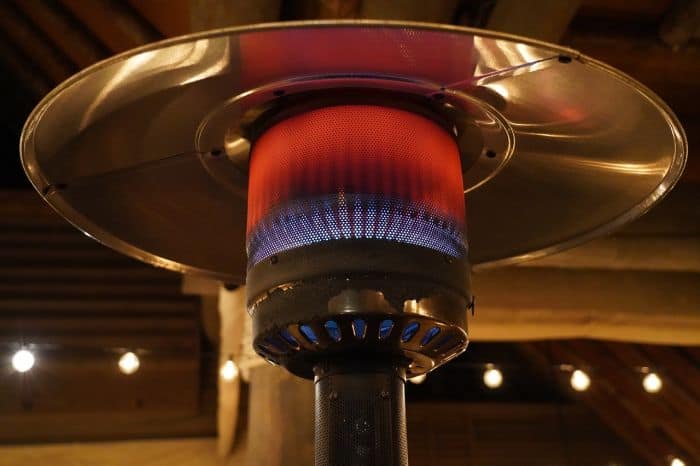
Propane Heaters
While propane can be expensive to acquire it is one of the best ways that you can heat your home as well as cook.
Most large propane heaters come with a hose that you can plug into any sized propane cylinder, while the smaller ones enable you to have direct input with a one-pound canister.
Portable heaters such as the Mr. Buddy Heaters here are excellent examples of products that are efficient and can heat small spaces quickly. Since these are designed for portability, using them to heat an entire house is not a viable option.
The higher-end buddy heaters will generate up to 18,000 BTU and can heat individual rooms pretty quickly.
It is important to make sure you have a carbon monoxide detector in the vicinity of the heater because propane leaks can happen and can sneak up on a sleeping family.
Alcohol Stoves
An alcohol stove is a lightweight alternative to a propane heater. There is a reservoir to fill with alcohol. The vapor from the alcohol escapes through the holes and it’s these vapors that are ignited, not the liquid fuel.
They can be efficient, with about two ounces of alcohol lasting for 20 minutes. The most common sources of fuel are isopropyl alcohol and denatured ethyl alcohol.
The stoves that use ethyl alcohol are pretty fuel-efficient. Capable of pumping out over 5,000 BTU, stoves like the Dometic ORIGO 5100 Heat Pal can heat a small space while preparing a meal for your family. One quart of fuel should give you upwards of 5 hours of heat.
It’s important to note that using an alcohol stove to heat large rooms will be difficult. In an emergency, setting up a tent in one of your rooms and having an alcohol stove heat that instead would be a more effective use of the fuel.
Since denatured alcohol is extremely flammable don’t leave this kind of stove unattended or knock the stove over.
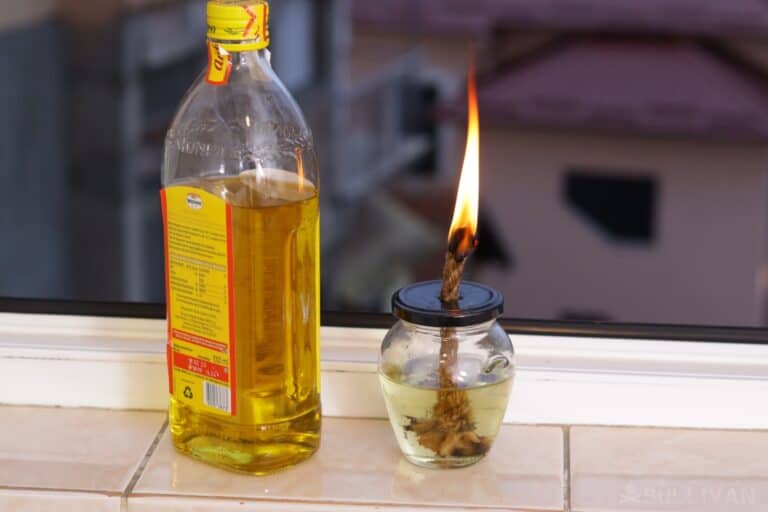
Candles
Don’t discount the effectiveness of the mighty candle to heat your home. Even smaller candles such as tea lights can be used to ward off a chill.
Using candles to help temporarily heat a space also provides the additional benefit of illumination without electricity.
You can purchase a candle heater or make your own out of clay pots which can be used successfully for years to heat small spaces.
The general idea is to capture the radiant heat from the candle and use the clay pots to distribute that heat through the room. The downside to using one of these devices is that they are just used for heat since the candles are covered by the terra cotta pot.
While you can produce some heat by using candles, there are far more effective ways of heating small spaces and generally, candles will be used as illumination to replace lamps.
Kerosene Heaters
Kerosene is a fossil fuel byproduct that has been used for heating and lanterns for a long time.
Kerosene heaters work by using a wick to draw up fuel from the tank which is lit and the resulting burning of the kerosene gas will provide heat which an internal fan will then blow out to heat your house.
While kerosene is a great way to heat a space there are some considerations when having one running in your house. These kinds of heaters need to be supervised as they can be a flammable hazard near high heat or open flames.
Kerosene is also notorious for giving off black smoke when burning incorrectly so a vented area will work best for this type of heater.
Hand Warmers
This method of heat doesn’t do much for your house temperature but in a pinch, it can provide heat for your body. They are affordable and easily packed away out of sight until needed making them a great prepping tool.
Hand warmers generate their heat through an exothermic reaction when you first open the package. Air enters the pouch and causes a reaction between the iron and water in the form of oxidation (rust).
Salt is added to the pouch to help expedite the process and vermiculite serves as the insulator so that it doesn’t burn too hot as well as too fast. This is how disposable hand warmers can keep their warmth for several hours instead of minutes.
Sometimes you’ll find pieces of charcoal inside the package and that is a carrier to hold the water.
There is another type of hand warmer that is reusable and they come in the form of plastic pouches full of liquid. The liquid inside is a mixture of water and sodium acetate. Sodium acetate is normally a chemical that likes to be solid instead of liquid.
Inside the pouch is a little metal disc that when snapped, excites the molecules in the sodium acetate and causes it to heat up and harden.
The heating effect ends when the pouch is fully solid, which you can then boil until it’s a liquid. These reusable hand warmers are generally bigger than their disposable counterparts and can be cumbersome if used while camping.
Portable Camping Cooking Bags
Usually found in United States MREs as flameless reaction heaters, portable cooking bags for camping work on the same premise as hand warmers in that the heat is produced with a chemical reaction with iron.
These are an excellent way to heat up food to a safe eating temperature as well as having a way to warm your hands.
The main difference between a portable camping cooking bag and a hand warmer is that the camping bags get much hotter, much faster, as they lack the insulation to regulate the heat from the reaction. Make sure you are careful with handling these bags as burning yourself is a common reality.
Some varieties of cooking bags require you to add water to start the chemical reaction, whereas others use a twisting motion to activate, much like a sodium acetate reusable hand warmer. Ideally, you’ll want to use these in the short term for cooking or to warm up quickly.
Catalytic Heater
Catalytic gas heaters are flameless sources of heat. Essentially the unit relies on chemical reactions between the catalyst and a gas source, primarily natural gas.
The nice thing about natural gas is that it will generally still work when there’s a power outage since the gas pumps usually have their generators.
When the element heats up it radiates the heat outward and is incredibly efficient in heating small places. Some models use propane tanks to power them and should be used close to a vented window.
The nice thing too is that they don’t require electricity as they work using low-pressure gas feeding.
Check out how these efficient heaters work here.
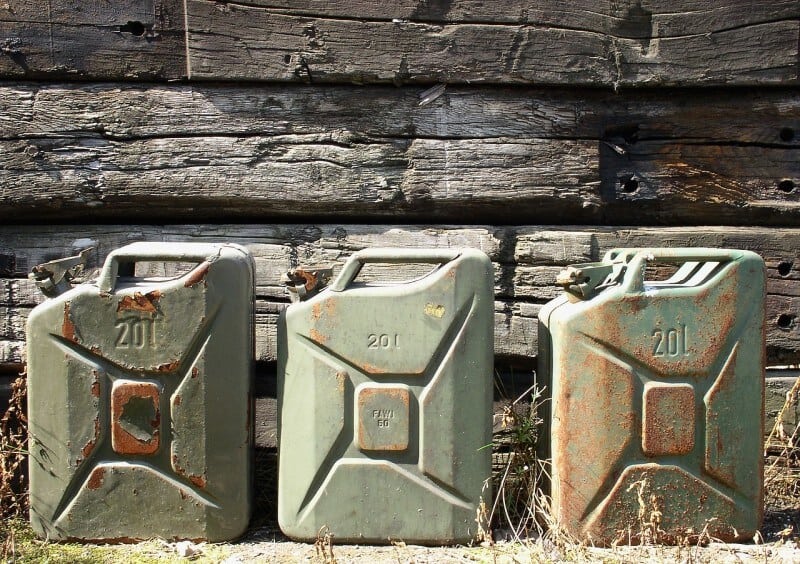
Biofuel
Biofuel isn’t a new product to the market but you’d be surprised at how many people don’t know about it. Essentially biofuel is broken down from plant matter turned into a gel that is highly flammable as a gas. The nice thing is that it’s non-toxic and biodegradable with a shelf life of about 5 years.
This is a popular choice for preppers because it doesn’t rely on harsh fossil fuels to provide warmth and a method of cooking food. If you’re just looking for a source of heat for a room, expect about 5-7 hours’ worth of runtime with one of these cans.
Additionally, these biofuel cans are refillable with additional biofuel which makes them a good option for power outages over long periods.
Soapstone Heaters
While soapstone cannot generate its heat it does an excellent job at holding on to it and letting it out slowly. Soapstone heaters use an external source of heat to warm up the stone which will then radiate that heat out for a few hours afterward.
Soapstone heaters come in a variety of forms but the most popular is one that is part of a wood stove. Essentially you use the wood stove to heat up the soapstone blocks that line the stove.
Once the stove gets hot enough, the soapstone will absorb all of the radiant heat and let it out slowly. Since it is such a good insulator you’ll seldom see soapstone overheat and crack.
Check out one in action here
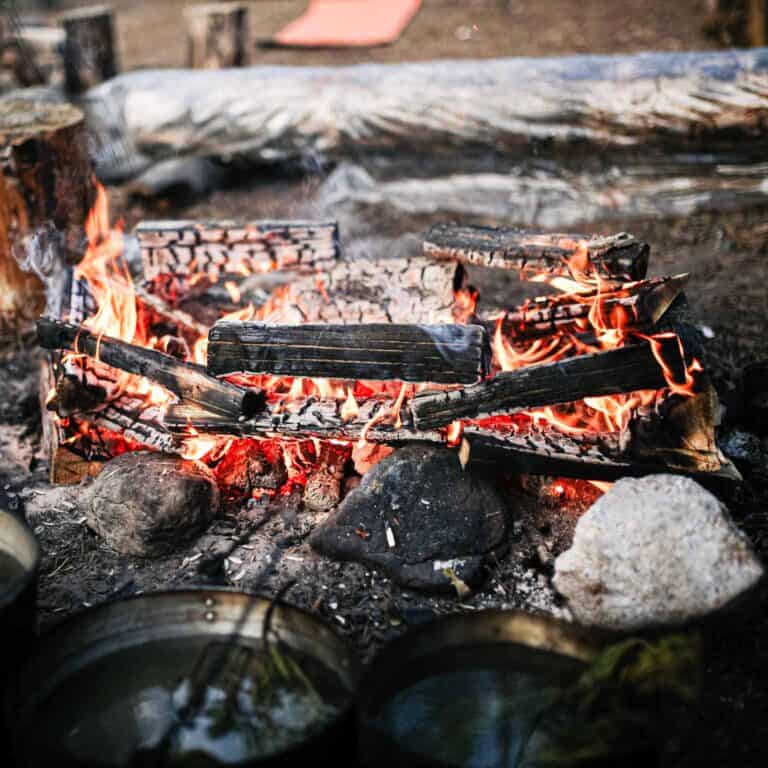
Rocks
In the colder months, there is an old camping technique that involves heating up rocks as a passive heat source. This method translates nicely into heating yourself in the case of a power outage at home.
The process involves gathering some medium-sized round rocks that you can sit next to a heat source. The rocks will absorb the heat and much like soapstone will release it slowly. Toss a few heated rocks in spare socks and you can keep them under your blanket for warmth.
Be mindful of what rocks you choose because they can overheat and explode if you have the wrong type. The general rule of thumb is to stay away from sedimentary rocks like shale or sandstone as they can explode if heated too much.
This is caused by moisture that is locked inside which heats up and turns to steam, with explosive results. Any metamorphic or igneous rocks will heat up just fine.
You can boil rocks for several minutes and then gently lift them out and wrap them in something to diffuse the heat. Alternatively, you can also set them by a hot fire and turn them occasionally for even heating.
Micro Wind Generation Technology
Micro wind generation made the list not because it’s a heat source, but because it is a viable way to keep the electricity going to power any sources of heat if there’s a power outage.
During the colder months, you’ll notice that the sun isn’t as powerful as it is during the spring and summer so solar technology is limited in its capacity to work.
However, wind stays consistent throughout the entire year and a miniature wind turbine would be sufficient enough to keep a battery bank charged to use with smaller portable style heaters.
Not only is it important to keep sources of heat around in case of an emergency, but it’s also important to try and prevent the need to use your backup stores.
Find out if micro wind generation is worth it for your house here.
Passive Solar Heating
Passively heating your house with the sun isn’t a new concept, but with modern materials and construction, it is simple to harness the sun’s power and distribute its heat throughout your house.
A combination of insulation, solar efficient windows, and sealing of your home will provide the means for efficient solar heating.
The majority of your windows should be facing the south side to get the most amount of sun during the day. The materials used should have a high thermal mass, which means they have a strong capacity to store the thermal energy that your house is collecting.
Airflow and convection are important to move that stored energy around while proper insulation and sealing will stop any of that heat from escaping.
If you’re looking for a way to lower your heating bill this is a great way to do both that and have a way to heat your home without electricity. TO learn how to create your own passive solar heating system, check out this video here.
Final Thoughts
While there isn’t one surefire way to heat your home during any sort of electrical outage or survival situation, a combination of multiple sources will ensure that you can adapt to a variety of scenarios.
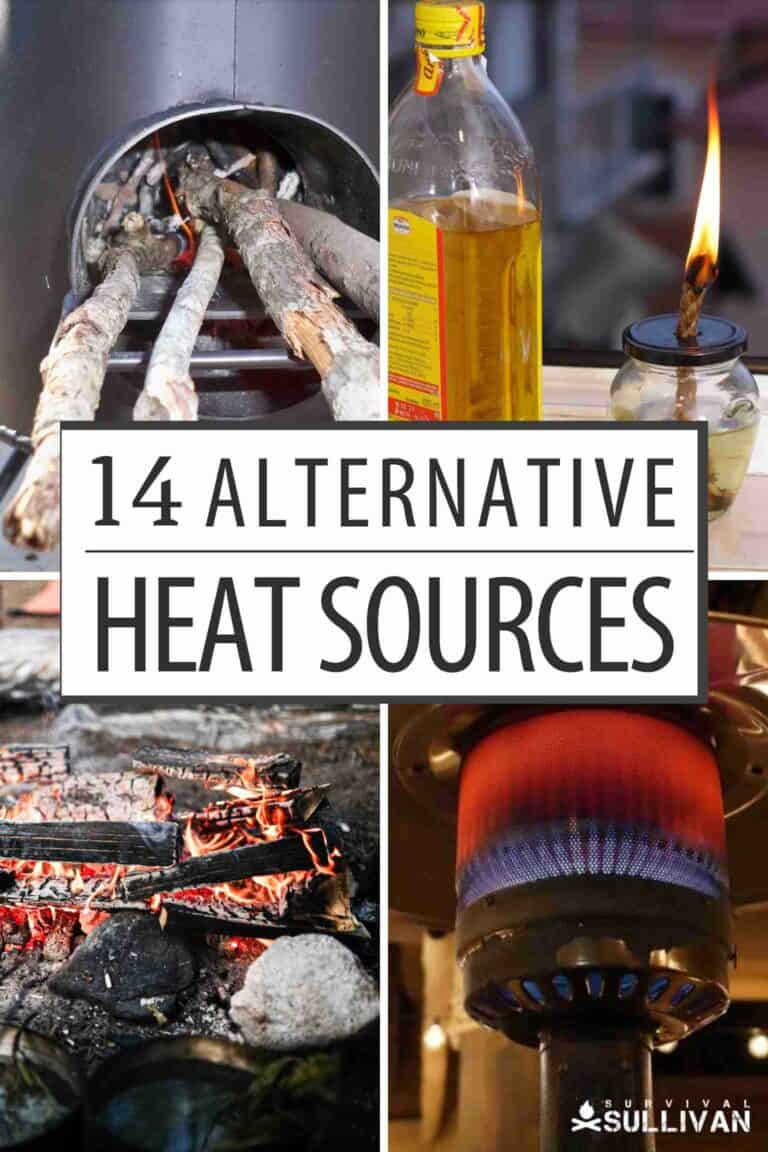

Perrin is an adventure guide and naturalist currently living a nomadic life in the Canadian wilderness. His education and expertise is in wilderness survival and wildlife tracking. He enjoys teaching people about the outdoors and has managed large groups on expeditions.
With several accredited certifications, including being a wilderness first responder and a leave no trace expert, Perrin believes it is important for all of us to reconnect with the natural world.

Enjoyed the article. I collected quite a few 25# propane tanks. Thee are good for emergency heat or barter. Still, nothing can replace a wood stove for heat. We put one in our home last October.
I agree – a woodstove is definitely the way to go. Nice dry heat and the best part… the fuel is free lol.
I actually was unaware of the last 3 types of fuel or heaters. Thermal mass and insulation are important and drafts and so on, and I am aware of certain principles and familiar with most of the common heaters/stoves used in camping , but I never heard of catalytic heaters or soapstone heaters and I don’t recall ever reading about biofuel.
I’m glad I read this article and you brought them to people’s attention. Although I live in Florida, surrounded by pine trees and tropical plants thus not ideal, but it never gets dangerously cold or stays cold long enough to be much of an issue that one require more than a “little” heat along with warm bedding.
Thumbs up.
Thanks for the kind words! The catalytic heater generally throws people off. They are still used today although I believe they were used more back in the 80’s. Thanks for the kind words.
Great information! Would love a wood stove but can’t do it in my camper right now, due to weight restrictions vs size I would need.
I tried purchasing Biofuel and apparently it can mean several things, with the most popular being biodiesel. So, exactly what are you talking about, and where can I find it please? Thank you for your time!
I put a woodstove in my camper and it was excellent. Had to rip out the bathroom for it to fit and I had one custom made out of a steel mailbox. While I recommend you buy from a reputable company, there are alternatices.
As for the biofuel – I usually find them in army surplus stores 🙂
Have a great day!
Passive solar heating would work much better if the majority of the windows face south, not north – at least in the northern hemisphere. The north side of everything is where you find moss because of the inability to access sunshine on that side.
Thanks for the comment!
I believe most most species grow on the equatorial side of whatever hemisphere they reside in. So in the northern hemisphere it grows predominantly on the south and in the southern hemisphere is generally grows on the north. I was a believer of it growing on the north too until I had a seasoned expedition leader explain to me that it might not be true 🙂
Have a great day!
I have a natural gas well that supplies all the natural gas I could possibly use. When looking for property you might be surprised at how many places do have natural gas wells available.
Unvented propane heaters and cook stoves generate a lot of water vapor. I know it’s counter-intuitive, but… one gallon of propane will produce four gallons of water, as vapor. This will condense on everything, and will negate the insulative value of your walls, even your Winter clothing. Most un-vented, “safe” fuels will generate a lot of water. Water is something you don’t want when struggling to stay warm. ‘Best to vent these things.